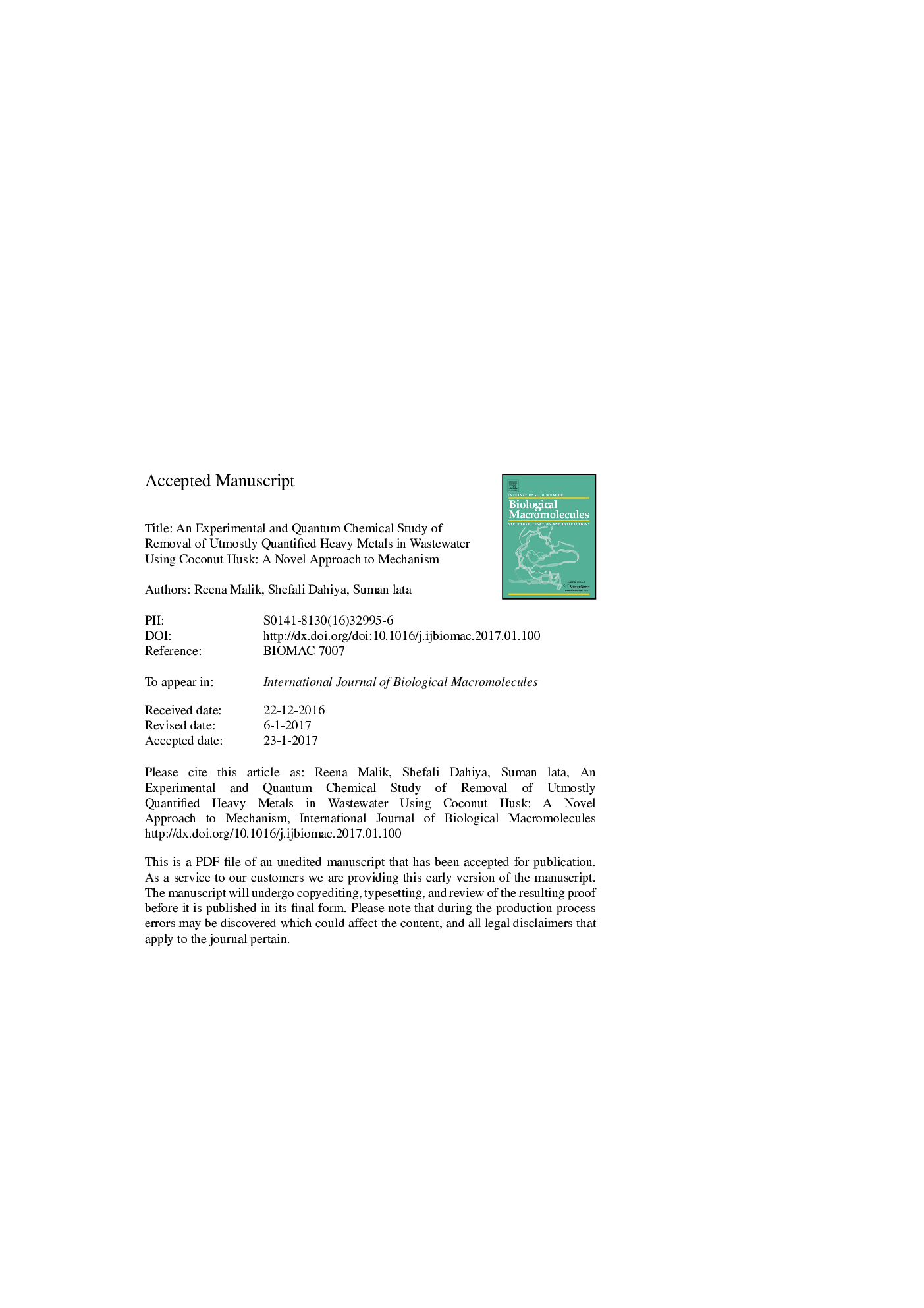| Article ID | Journal | Published Year | Pages | File Type |
|---|---|---|---|---|
| 5512259 | International Journal of Biological Macromolecules | 2017 | 38 Pages |
Abstract
The present study explores the uptake capacity of low cost agricultural waste i.e.Unmodified Coconut (Cocos nucifera L.) Husk for the removal of heavy metal (Pb2+, Cu2+, Ni2+ and Zn2+) ions from industrial wastewater. The effect of various operational parameters such as adsorbent dose, high initial metal concentration (100Â mg/L-500Â mg/L), pH, temperature and agitation time on the removal of these ions has been investigated using batch experiments. The results showed that maximum uptake through adsorption occurred at 443.0Â mg/g (88.6%) for Cu, for Ni with 404.5Â mg/g (80.9%), 362.2Â mg/g (72.4%) for Pb2+ and 338.0Â mg/g (67.6%) for Zn2+ ion simultaneously. The adsorption capacity was found to be sensitive to the amount of adsorbent, heavy metal ion concentration, pH, temperature and contact time. The experimental statistics have been correlated and interpreted by a new proposed mechanism based upon quantum chemical study of the adsorbent. The theoretical study using quantum has provided the rich electron donation sites of Coconut Husk and hence proposed mechanism of removal. The various adsorption isotherms (Langmuir, Freundlich, Temkin, Dubinin-Radushkevich and Flory-Huggins), SEM study and physico-chemical properties of the ions suit well to the observed data.
Related Topics
Life Sciences
Biochemistry, Genetics and Molecular Biology
Biochemistry
Authors
Reena Malik, Shefali Dahiya, Suman lata,
